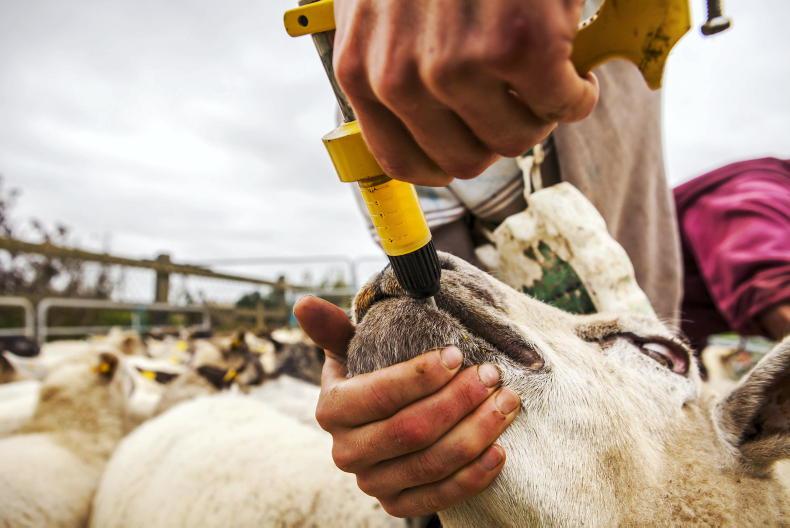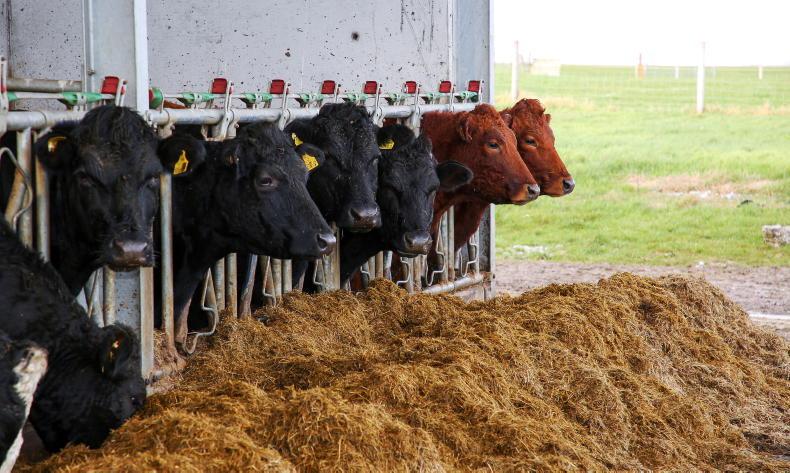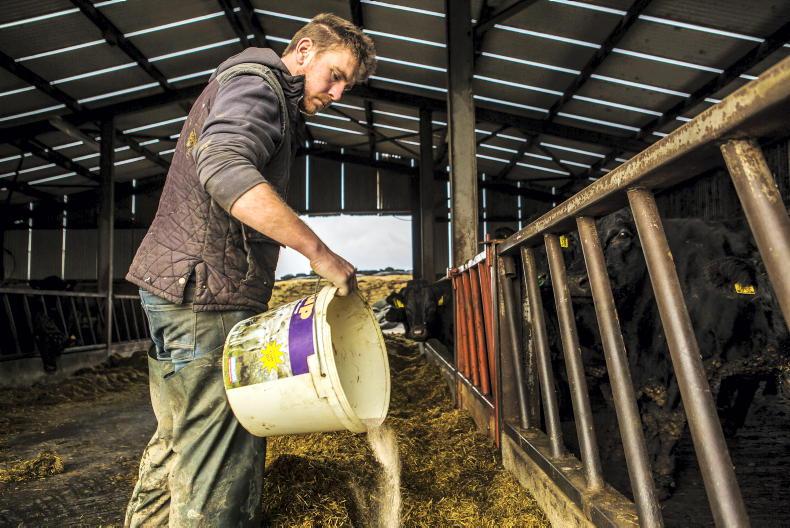Fluke and lice will be the main parasites bothering cattle over winter. If left unchecked, cattle performance will suffer.
When it comes to dosing, taking your time to treat animals properly is as important for effective parasite control.
Outlined are five tips for treating fluke and lice in cattle.
1. Choosing the right fluke product
Dosing for fluke is not just as simple as buying a product and then administering it to cattle.
Some products treat fluke at the early immature and immature stages. They are best used two to three weeks after cattle are housed.
Other products target mature fluke, which means treatment should be around eight to 10 weeks post-housing.
Therefore, pay attention to what product you buy. Don’t just lift the cheapest product off the shelf, as the optimum time for using the dose may have passed.
Autumn-calving cows, finishing cattle and stores destined for sale in early spring will benefit from a fluke product that targets the parasite at the immature stage.
This will maximise weight gain on a concentrate diet and improve the chance of cows going back in-calf.
Dry spring-calving cows can be treated with the same product or given a dose that targets mature fluke if it is more practical.
2. Weighing cattle before dosing
Weighing cattle improves the accuracy of the dose administered. Under-dosing is worse than over-dosing, as not all parasites will be killed. More often than not, a follow-up dose is required which comes at a cost.
If there is no weighbridge on farm, group animals in the race so they are evenly sized and set the dosing rate to the heaviest animal in each pass.
3. Dosing guns and applicators
Make sure dosing guns and applicators are clean and properly calibrated. A quick calibration check is to fill the gun with 20ml to 30ml of water and discharge in a jar. Use an old syringe to suck up the discharged water to check the volume.
If there are air bubbles present in the gun, always expel them before dosing, otherwise animals will not get the recommended dosing rate.
If using an injected product, replace needles at regular intervals, as repeated use will cause them to become blunt.
4. Accurate dosing technique
Only dose animals that are properly secured in a headlock or handling race. Do not try to apply pour-on products to animals standing in group pens in a handling unit or in the shed. This only leads to dosing products being wasted or applied incorrectly.
With an oral fluke product, a head scoop is recommended. Using a long-reach hook applicator is also a big help to keep the animal’s head up, thereby reducing the amount spat out by cattle.
5. Lice
Most lice products have a set volume for treating cattle and often have an applicator spout on the bottle.
Again, treat animals that are secured in a race, so that the product is applied properly and choose a product that targets biting and sucking lice.
Clipping cattle along the back can help reduce problems with lice.
Read more
BEAM penalty interest applied to 77 farmers
Irish beef price off the pace
Fluke and lice will be the main parasites bothering cattle over winter. If left unchecked, cattle performance will suffer.
When it comes to dosing, taking your time to treat animals properly is as important for effective parasite control.
Outlined are five tips for treating fluke and lice in cattle.
1. Choosing the right fluke product
Dosing for fluke is not just as simple as buying a product and then administering it to cattle.
Some products treat fluke at the early immature and immature stages. They are best used two to three weeks after cattle are housed.
Other products target mature fluke, which means treatment should be around eight to 10 weeks post-housing.
Therefore, pay attention to what product you buy. Don’t just lift the cheapest product off the shelf, as the optimum time for using the dose may have passed.
Autumn-calving cows, finishing cattle and stores destined for sale in early spring will benefit from a fluke product that targets the parasite at the immature stage.
This will maximise weight gain on a concentrate diet and improve the chance of cows going back in-calf.
Dry spring-calving cows can be treated with the same product or given a dose that targets mature fluke if it is more practical.
2. Weighing cattle before dosing
Weighing cattle improves the accuracy of the dose administered. Under-dosing is worse than over-dosing, as not all parasites will be killed. More often than not, a follow-up dose is required which comes at a cost.
If there is no weighbridge on farm, group animals in the race so they are evenly sized and set the dosing rate to the heaviest animal in each pass.
3. Dosing guns and applicators
Make sure dosing guns and applicators are clean and properly calibrated. A quick calibration check is to fill the gun with 20ml to 30ml of water and discharge in a jar. Use an old syringe to suck up the discharged water to check the volume.
If there are air bubbles present in the gun, always expel them before dosing, otherwise animals will not get the recommended dosing rate.
If using an injected product, replace needles at regular intervals, as repeated use will cause them to become blunt.
4. Accurate dosing technique
Only dose animals that are properly secured in a headlock or handling race. Do not try to apply pour-on products to animals standing in group pens in a handling unit or in the shed. This only leads to dosing products being wasted or applied incorrectly.
With an oral fluke product, a head scoop is recommended. Using a long-reach hook applicator is also a big help to keep the animal’s head up, thereby reducing the amount spat out by cattle.
5. Lice
Most lice products have a set volume for treating cattle and often have an applicator spout on the bottle.
Again, treat animals that are secured in a race, so that the product is applied properly and choose a product that targets biting and sucking lice.
Clipping cattle along the back can help reduce problems with lice.
Read more
BEAM penalty interest applied to 77 farmers
Irish beef price off the pace










SHARING OPTIONS